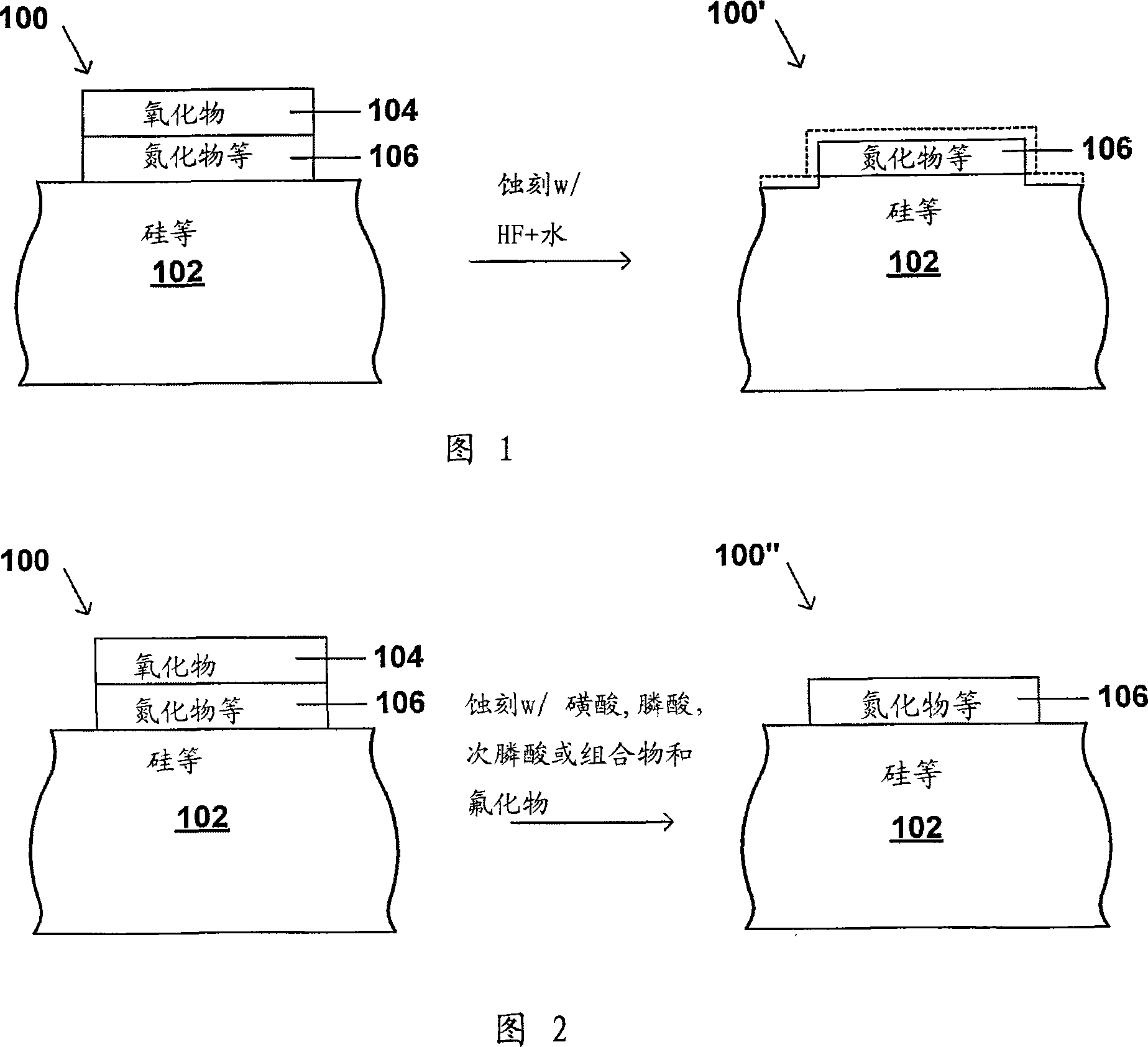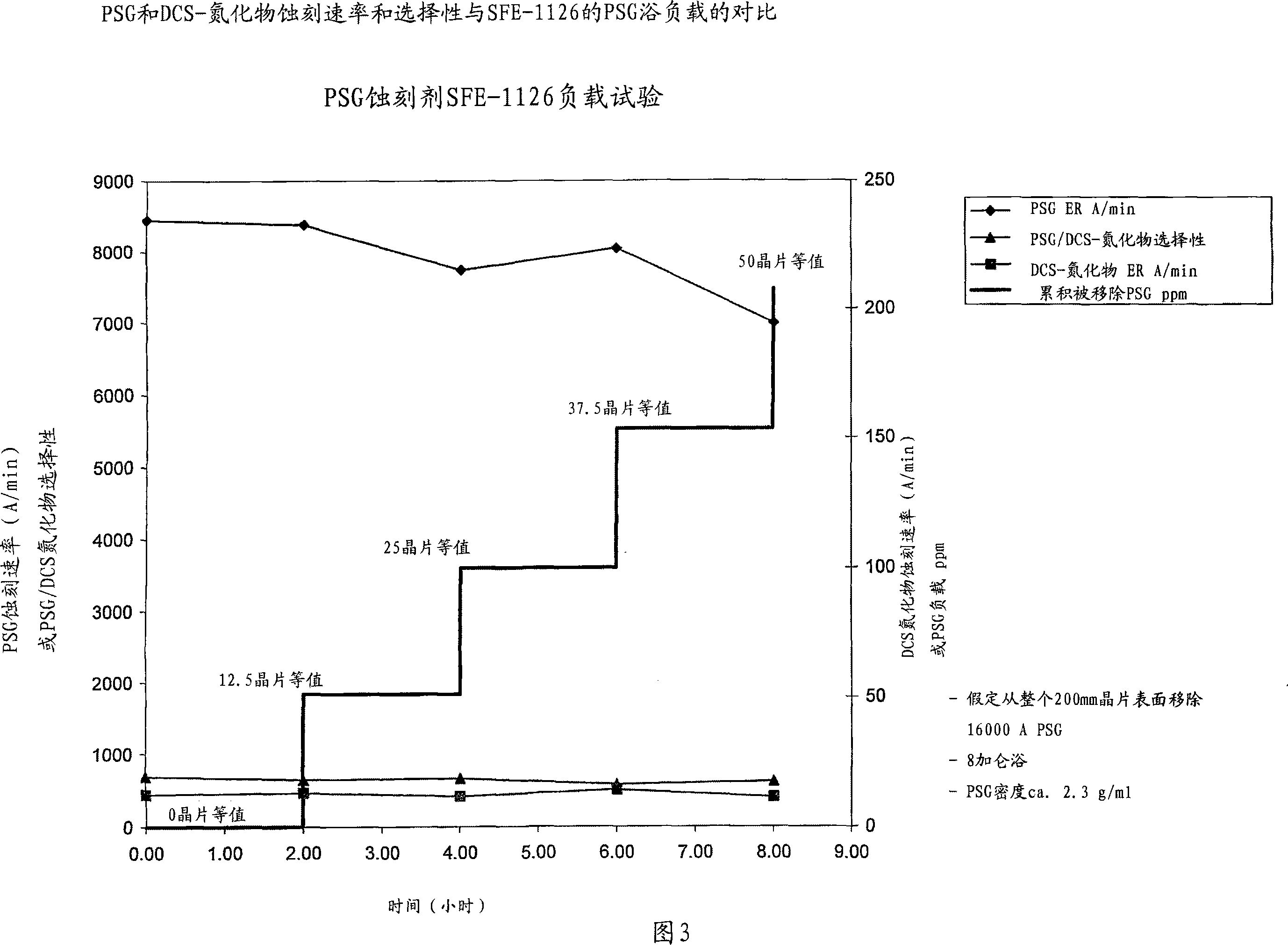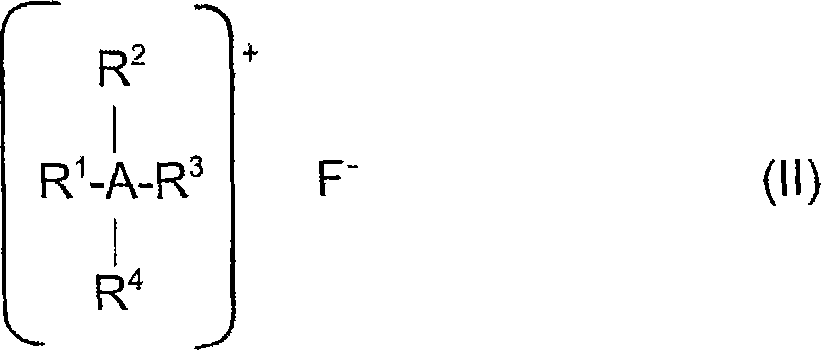Selective wet etching of oxides
A selective, oxide-based technology for electrical components, circuits, semiconductor/solid-state device manufacturing, etc., that solves problems such as unacceptable etching, loss of adhesion, unwanted
- Summary
- Abstract
- Description
- Claims
- Application Information
AI Technical Summary
Problems solved by technology
Method used
Image
Examples
Embodiment Construction
[0024] As used herein, a "composition" includes a mixture of materials including the composition as well as products formed between reactions or decomposition of materials comprising the composition.
[0025] As is known in the art, although not directly related, generally in wet etching, as the etch rate increases, the etch selectivity decreases. While it is important to achieve high etch rates to maintain productivity, it is equally or more important to achieve high selectivity. Thus, there is a need to balance these two desirable properties. Accordingly, the present invention provides a wet etch composition that maintains silicon oxidation relative to surrounding structures such as nitrides, high nitrogen content silicon oxynitrides, metals, silicon, suicides, photoresists, and other materials. A good balance between the etch rate and etch selectivity of the material.
[0026] Selective wet etch solutions are important for the design and manufacture of devices for state-o...
PUM
 Login to View More
Login to View More Abstract
Description
Claims
Application Information
 Login to View More
Login to View More - R&D
- Intellectual Property
- Life Sciences
- Materials
- Tech Scout
- Unparalleled Data Quality
- Higher Quality Content
- 60% Fewer Hallucinations
Browse by: Latest US Patents, China's latest patents, Technical Efficacy Thesaurus, Application Domain, Technology Topic, Popular Technical Reports.
© 2025 PatSnap. All rights reserved.Legal|Privacy policy|Modern Slavery Act Transparency Statement|Sitemap|About US| Contact US: help@patsnap.com



